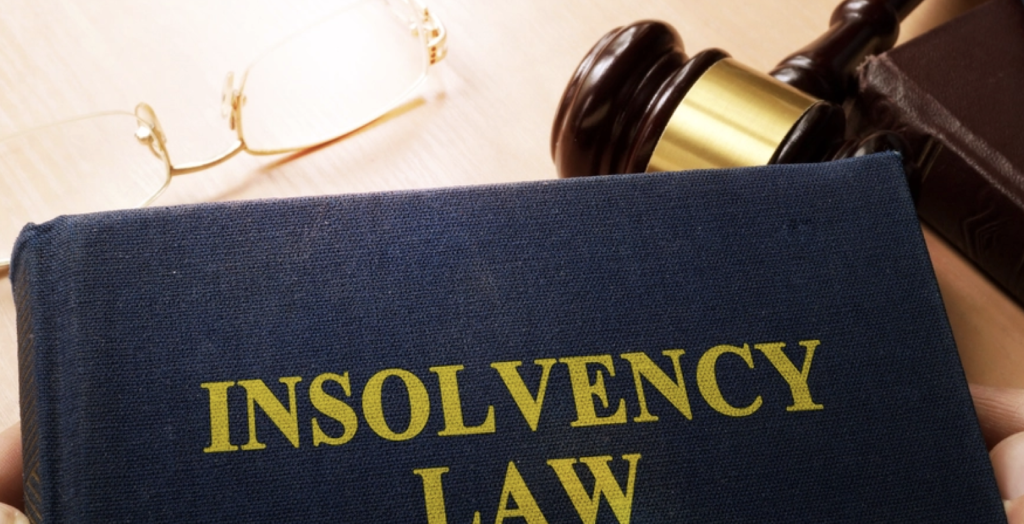Getting My Insolvency Practitioner To Work
Getting My Insolvency Practitioner To Work
Blog Article
About Insolvency Practitioner
Table of ContentsSome Of Insolvency PractitionerEverything about Insolvency PractitionerThe Greatest Guide To Insolvency PractitionerSome Known Factual Statements About Insolvency Practitioner Insolvency Practitioner Can Be Fun For AnyoneInsolvency Practitioner Things To Know Before You Get ThisSome Known Factual Statements About Insolvency Practitioner
Insolvency is when liabilities are higher than the value of the business, or when a borrower can not pay the debts they owe. A business can come to be insolvent because of a variety of scenarios that lead to bad capital. When faced with insolvency, a business or individual can speak to financial institutions straight and restructure debts to pay them off.Bankruptcy can bring about bankruptcy procedures, in which lawsuit will certainly be taken versus the bankrupt individual or entity, and possessions may be sold off to repay superior financial obligations. Entrepreneur might call lenders directly and restructure financial obligations into more manageable installments. Creditors are usually open to this technique due to the fact that they intend to be settled and avoid losses, even if the repayment gets on a postponed timetable.
Insolvency Practitioner Things To Know Before You Buy
The owner produces a proposal outlining how the financial obligation might be reorganized using expense reductions or various other plans for support. The proposition shows lenders how business may create adequate capital for profitable operations while paying its debts. Typically, a forgiven financial debt may be taken into consideration earnings by the Internal Income Solution (IRS).
:max_bytes(150000):strip_icc()/Liquidation-4193561-Final-699e67d885c243c39cac2985b16d51cb.jpg)
The Single Strategy To Use For Insolvency Practitioner
The business might end up paying big amounts of money in problems and be overcome operations. When procedures cease, so does the business's revenue. Lack of revenue causes accounts payable and lenders requesting money owed to them. Some business come to be bankrupt since their items or solutions don't evolve to fit customers' altering needs.
Expenditures go beyond earnings and expenses stay unpaid. Kinds of bankruptcy include cash-flow insolvency and balance-sheet insolvency. Cash-flow bankruptcy takes place when a business has the possessions to cover their debts yet they are in the incorrect type, such as property as opposed to fluid funds. Balance-sheet bankruptcy, on the other hand, indicates a lack of possessions in any kind of kind to cover debts.
The IRS states that an individual is insolvent when the total responsibilities go beyond complete properties. A personal bankruptcy, on the various other hand, is an actual court order that depicts exactly how a bankrupt person or service will repay their creditors, or how they will sell their possessions in order to make the payments.
Everything about Insolvency Practitioner

Financial obligation debt consolidation is when you integrate numerous loans into one brand-new loan, frequently to attain far better terms. Insolvency is not the like bankruptcy, although a firm that has actually come to be insolvent might declare insolvency. Insolvency is the state of not having the ability to pay your obligations while personal bankruptcy is a legal process to discharge your debts.
Understanding the factors that can bring about insolvency, such as overspending, can help you protect against bankruptcy and its repercussions.
7 Easy Facts About Insolvency Practitioner Shown
It is popular that supervisors and policemans of firms (and managers of minimal responsibility companies) owe fiduciary duties to their companies and their investors (or members). These fiduciary responsibilities are defined by state statutes and, though there are variants you can try these out from state to state, they typically consist of a responsibility of commitment and a responsibility of treatment.
The responsibility of treatment requires supervisors and police officers to exercise persistance, to make informed choices, and to act in great confidence to ensure that their activities are in the finest interest of the company. Beyond the scope of this discussion, some states allow these responsibilities to be limited either by so noting in the organizational papers or conforming with various other needs.
The Basic Principles Of Insolvency Practitioner
A lot of states specify insolvency in two methods( 1) when a firm's liabilities become higher than the sum of its assets or (2) when the business comes to be unable to pay its financial debts as they come to be dueand welcome both interpretations (Insolvency Practitioner). The change in responsibilities happens since when a company is bankrupt, there is no value in the firm beyond that owed to the business's lenders to make sure that the equity holders no longer have a financial risk in the company
Be cautious about providing investors favoritism at the expenditure of lenders (e.g., accrediting and funding a dividend or a supply redemption). Beware about preferential treatment in between classes of investors. Clear up initiatives to find out all the facts before taking a particular strategy; directors ought to genuinely think that any kind of decisions made are in the very best rate of interests of the firm in its entirety (i.e., decisions will browse this site be evaluated in hindsight because of the effect of such activities on the company).
In any type of insolvency or insolvency proceeding, settlements made to particular financial institutions at the cost of various other creditors can be clawed back, particularly if there is some link in between the business and the creditor. Take into consideration recommending at a yearly investor conference (or any various other meeting of shareholders) a resolution affirming that all prior business choices and actions taken by the directors and officers of the firm were taken in good belief after an exercise of affordable care.
Examine This Report on Insolvency Practitioner
Fully divulge any individual or company relationships with celebrations beyond of transactions entailing the company to stay clear of the appearance of a problem of rate of interest. In evaluating potential fund elevating deals or a sale of possessions of the struggling company, understand that these deals might be looked at later due to any Visit Your URL subsequent growth of supervisors' fiduciary tasks to include lenders.
Report this page